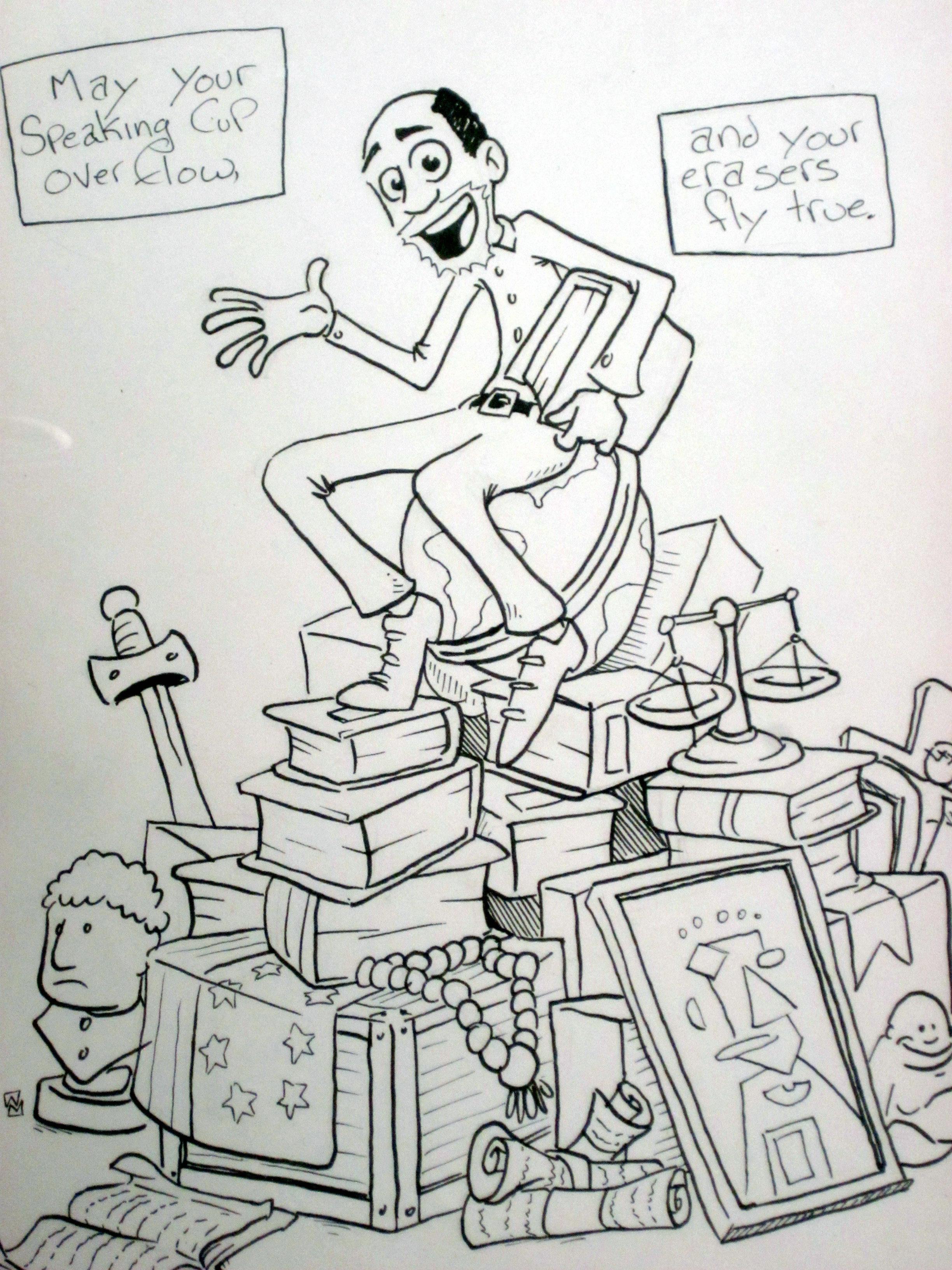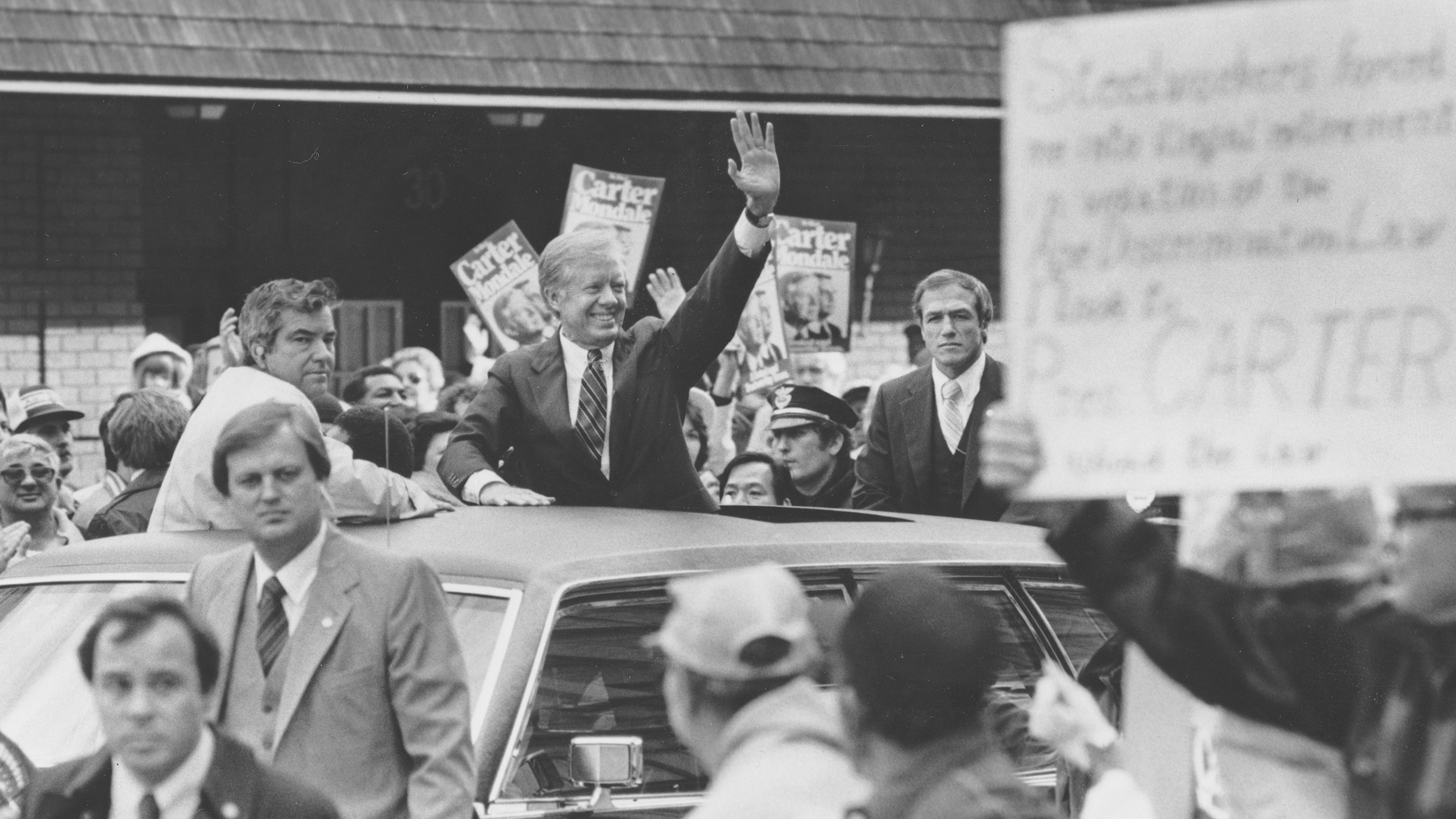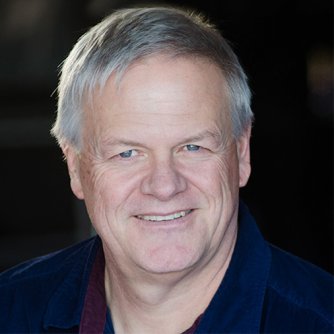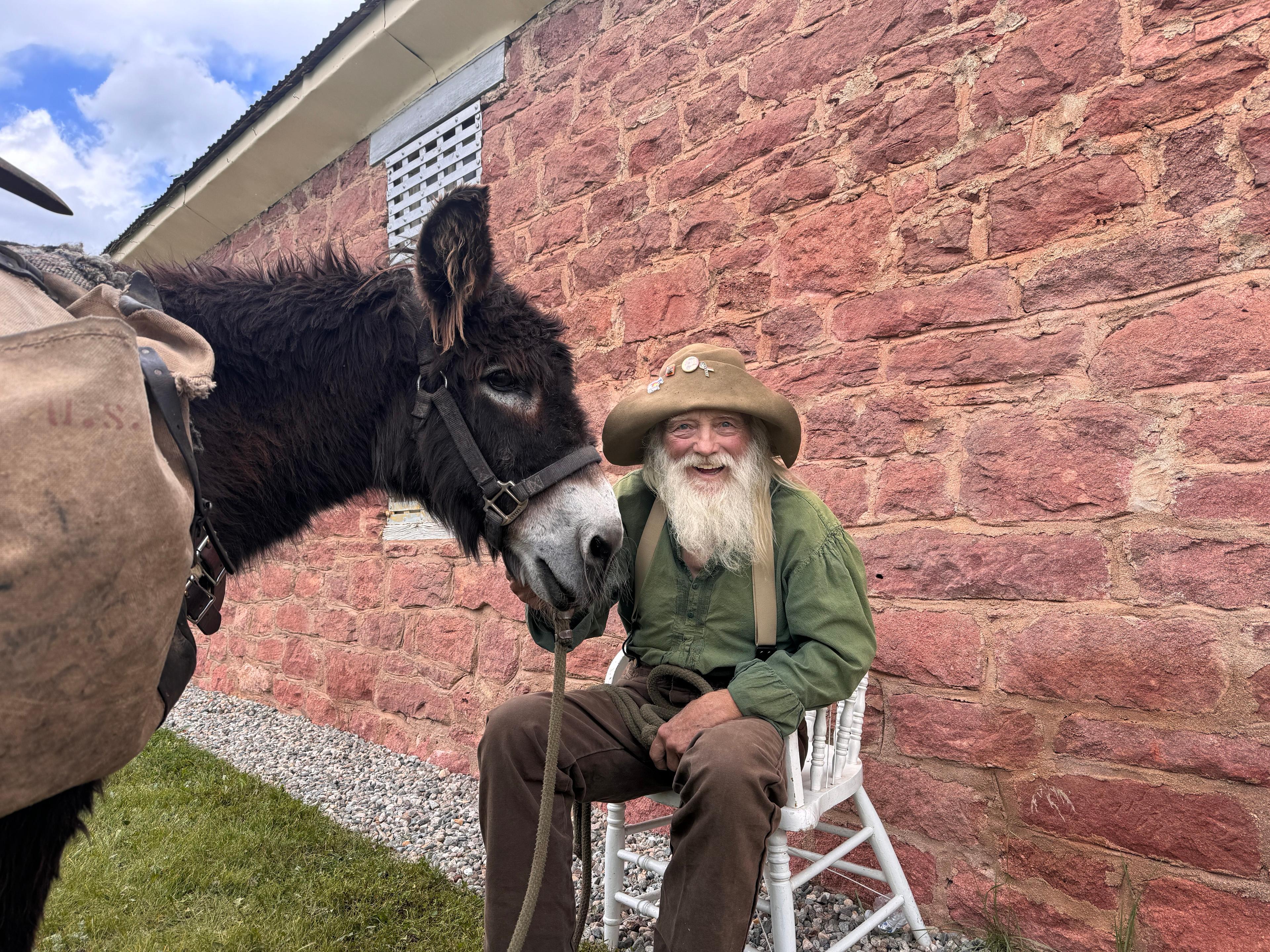
Rick Young was the kind of teacher who kept everything -- absolutely everything -- up on the walls until the very last day of his 25-year career.
“I believe in teaching right up to the last minute,” he laughs, hovering over a recycling bin the day after the last class of his career. “I didn’t want to have bare walls that would give the students the message that ‘Oh, I’m out of here. We’re not really going to be teaching and learning,’ I just had to do it all the way up to the end.”
The walls of his classroom at Daniel C. Oakes High School in Douglas County are a colorful cacophony of artwork: the U.S. Constitution, old photos of him and students on outdoor trips, posters of the world’s religions and an aquarium with an exotic fish.
Numbered pictures of all the presidents through Reagan line the top of the wall – hand-drawn caricatures of the presidents carry through after that. Young is relieved the teacher who will replace him to teach history, world religions and art told Young he'll keep them up.
“I’m very happy about that,” he laughs. “That would take me an hour just to take those down! "
He jokes now, but this past week -- this whole last quarter, in fact -- has been an emotional rollercoaster.
“I have been in tears quite a bit this last week,” Young said.
After 25 years of teaching, he’s calling it quits. Young says the profession of teaching has changed too dramatically in a way that doesn’t allow him to teach in the manner most meaningful to his students.
“My Home”
Young started his career with a degree in art and then went into commercial advertising and design. He is a talented artist, but didn’t like the job. So he got his teaching degree and landed in a place where he spent his next 25 years.
“This became my home,” he said. “This is a unique, special place.”
Daniel C. Oakes, the smallest school in Douglas County, is an alternative high school. That means regular high schools haven’t worked for its students; many struggle with family problems, school problems or both. For some, it’s their fourth try at high school – and they know it’s the last stop. Many though, because of teachers like Young, finally find success.
Each year, the graduating seniors from the tight-knit school get to make a speech. They are often heartfelt thanks to teachers.
“This is such a special place,” said one girl, during one graduation ceremony. “I have baggage just like everyone here. And this is the place and these are the people who love you for all of it.”
Students thanked Young for challenging their minds, elevating their writing and giving them the confidence to study art.
Many students stay in touch with the school long after they graduate. They let teachers like Young know what kind of influence they had on a young mind.
“Here, we’re able to make deeper questions and we’re able to hear back from these kids,” Young said. “It is gratifying to hear these comments about how you changed the way a student looks at the world."
Young relished working his students hard. He says he worked into the night, giving them detailed feedback on their research papers. He constantly searched for new materials, customizing each lesson to his students, finding new ways to connect with them.
One former student, Ryan Hostetler, said he wasn’t expected to finish high school. Then he came to DC Oakes – and Young’s class.
“He’s the most effective writing teacher I’ve ever had the experience of being taught by and that includes literature writing classes at the graduate level,” he said.
Hostetler decided to become a teacher.
“I wanted to make the same sort of difference in people’s lives that Rick made in my life,” he said. Hostetler now teaches at DC Oakes.
New Standards
Why would Rick Young, a 58-year-old teacher who imagined he'd teach until the end of his working career, leave something he’s so obviously passionate about?
“It’s become a lot harder to teach and especially to teach in a way that I personally think is meaningful for my students,” he said.
Young is talking about a national trend in teaching to more clearly document and measure what’s taught, meant to keep teachers accountable, along with a new standards. That led to a shift for teachers toward standardizing lesson planning.
He said this means filling out what is, to his mind, endless paperwork as he now must plan his lessons in a more systematic and precise way.
Young said lessons must be written in the form of a “backward design.” That is a three-stage framework. It begins with detailing his desired results, how students will be assessed, and finally explaining how he will provide learning experiences and opportunities for practice and application.
Teachers are told to strive for a “world-class outcome” based on the Colorado Academic Standards, which are required items students must learn. In 12th-grade English, for example, that calls for strategically creating meaning through complex writing and speaking, and defending metacognitive process in a quantitative and qualitative method.
Young has all of these instructions taped to his wall. And there's more:
“I’ve got to make sure the lesson focuses on a 21st-century skill,” he said, which could mean civic responsibility, financial literacy, global awareness, health and wellness, problem solving, resiliency, and systems thinking, among others.
The lesson must also encourage the ‘the 4 ‘c’s’ – communication, creativity, collaboration, and critical thinking.
“And then there’s a rubric for each of the 4 c’s – so you may think, ‘OK, I’m going to have these kids work on critical thinking,’ well the district defines critical thinking in a particular way and there’s an incredibly detailed rubric as to what you are supposed to be looking for in order to teach critical thinking,” he said. “And that just gets very cumbersome.”

Adding to his frustration is the requirement that he and other teachers must document all of this planning and packaging of complex rubrics, in order to prove that he’s doing what he’s supposed to be doing.
“This is not time that is productively going towards creatively planning a lesson, or grading student work or communicating with parents – if you are going to do all those things which you’ve got to be an effective teacher, this is going to be on top of that,” he said.
Sometimes he felt like he had to make sure he’s was still actually teaching history.
“It takes an exceptional amount of work for a teacher to teach in what I consider a meaningful way -- and please the powers that be,” he said. “Everything’s very time-consuming. In in my mind, it’s not productive time. It’s not helping my students. It limits the freedom of teachers to really freely teach and of principals to freely lead and evaluate. “
The district and national backers of this methodical planning say it creates the highest-quality classrooms, freeing teachers to teach what they want, while giving them better structured lessons and activities that push kids to think at a higher level and lead their own learning.
Young believes it left him less time for creativity, and began to take a physical and mental toll as well.
Final Notes
As Young cleans out his room for the last time, he takes a moment to flip through a book of memories teachers gave him. Kids wrote messages too -- some of them funny.
“I’m grateful for all the eggs of knowledge you cracked over my head,” one of them wrote. Anther was grateful for Young creating a safe space for students to learn and converse with grace and respect. And then there's this note on the back of a photocopied assignment for which the sudent earned an A+:
We students from Oakes were not the average students that ever had an easy life. We didn’t quite fit the mold. But you as well as all of the teachers at Oakes, took us in and treated us as if we were your most prized possessions. It helped us want to become more.
Young will return to producing his own art, and occasionally substitute at DC Oakes.









